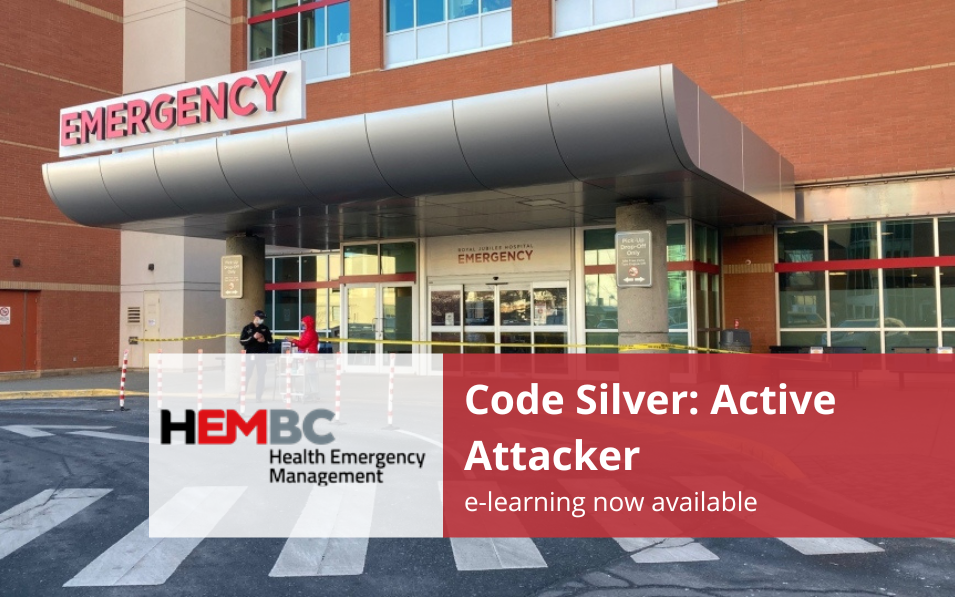Here is how you can prepare for what to do in the event of an active attacker situation.
The following is a sensitive topic and may be triggering. If you are feeling anxious or need someone to speak with, reach out to your manager or to our Employee and Family Assistance Program, Homewood Health or visit the PHC Thriving in the Workplace toolkit.
It’s easy to think: “it’ll never happen here” or ”not in my workplace”, but sadly, stories of active attacker events—when an individual is actively engaged in harming, killing or attempting to kill others with a weapon—are becoming more common in cities around the world. And British Columbia is no exception. The increase in violent attacks and threats of violence have prompted many health care settings in provinces to adopt active attacker policies and procedures to prepare staff and medical staff should the unthinkable happen.
“Investing in personal and organizational preparedness is the best thing we can do to support our staff and patients in the event of an emergency,” says John Lavery, executive director of Health Emergency Management BC (HEMBC), the program responsible for providing emergency management expertise and support to health authorities across the province. HEMBC has been working with the Ministry of Health on the development of a new code with supporting procedures and resources to follow in the event of an active attacker threat at a health organization site.
What is Code Silver?
Code Silver outlines the principles of run, hide or fight should an individual become actively engaged in harming, killing or attempting to kill others with a weapon. Because active attacker situations evolve quickly—and often before police arrive on scene—it’s important to know what to do to protect yourself and patients, clients, residents and visitors.
“The new code will outline policies and procedures all staff can follow in the event of an active attacked situation at any health care site,” explains John, adding that the code will be implemented at all health authorities over the course of the next year.
When is this change happening?
Starting November 30, 2022, Code Silver: Active Attacker can be activated and appropriate response procedures can be followed at PHC sites in acute and long-term care settings. This new code uses the principles of RUN, HIDE, FIGHT and increases standardization for those who work across multiple sites.
Training now available
We encourage everyone to complete the e-learning course. The online module takes 10-15 minutes to complete, and can be done at your own pace. More information and course link can be found on connect.
By the end of the course, you will be able to:
- Distinguish between a Code Silver Active Attacker situation and a Code White situation
- Identify necessary exit routes, lockable doors and hiding locations
- Weigh the ethical implications and professional responsibilities of staying with/leaving patients during an active attacker situation
- And more
Taking the training now is a good opportunity to learn more about the code so you are prepared when the code goes live at your site. Learn more about the course on connect.
Learn more
Visit our HEMBC webpage for more information and training opportunities for Code Silver. To learn more about how to be prepared in your work area, contact your supervisor or HEMBC at hembc.lm@phsa.ca.
Investing in safety
In the most recent Pulse Check survey, PHC staff and medical staff indicated that improving safety is a top priority. Across the organization and in BC, investments are being made to improve safety at work.
Want to learn more?
- Read: Improving safety in our emergency departments (connect)
- Read: 320 protection services officers will support safer workplaces for health care workers (BC Gov News)


